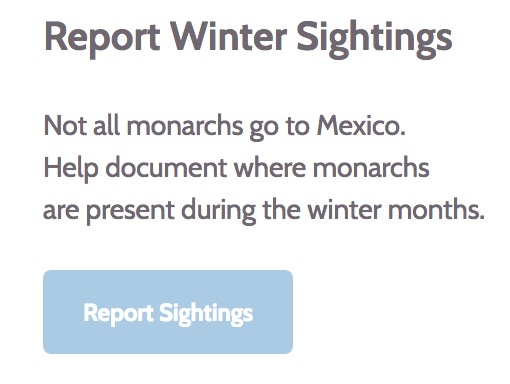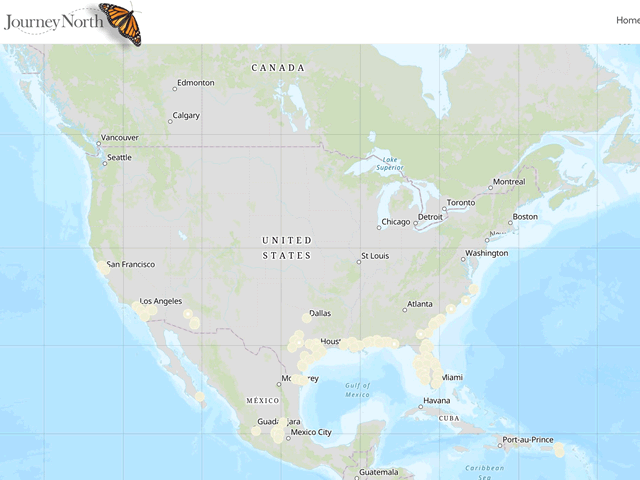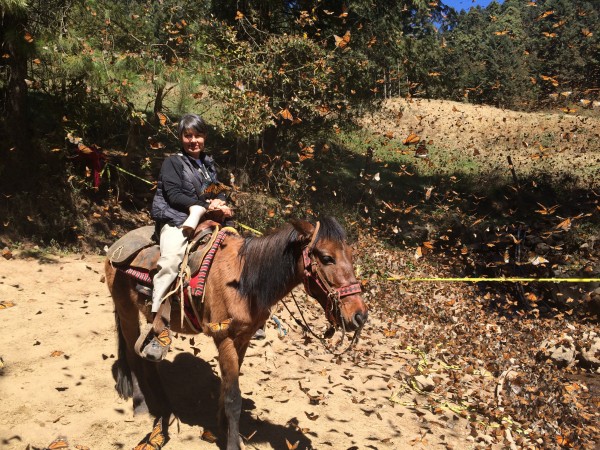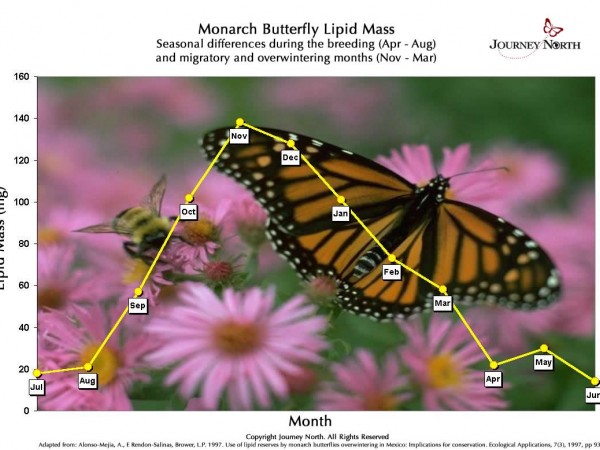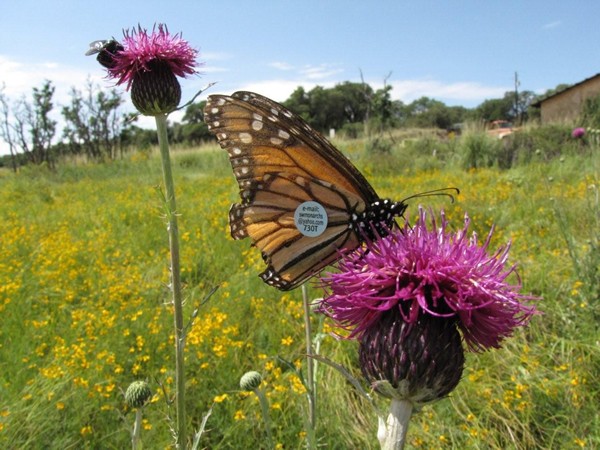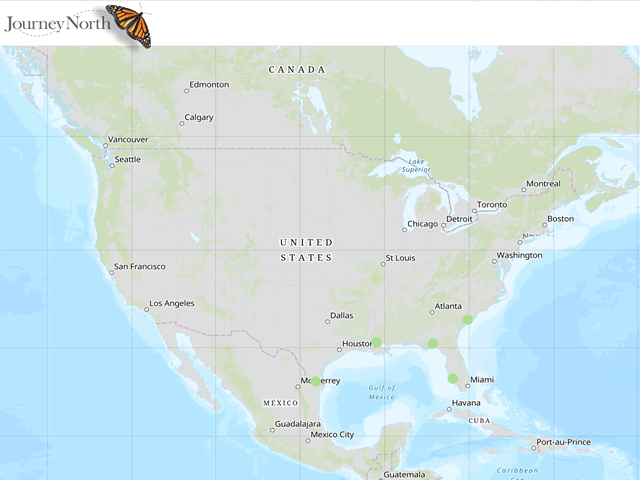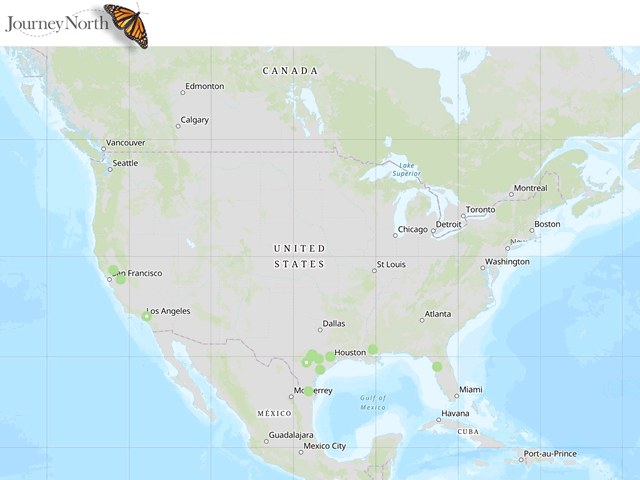An Unusual Year
This is an unusual year at the overwintering sites in Mexico and at the California sites, too. Active mating and hints of early departure are being reported.
Warm Season, Early Departure?
The monarchs have sustained peak activity levels at the sanctuaries for over a month, reports Estela, but an observation this weekend was most surprising:
"Diego, a guide at Sierra Chincua colony, announced that the very first monarchs started migrating north during the past weekend (Feb 16-17). Early departure was predicted by many locals all over, even in Angangueo, after seeing so many monarchs cascading down to town every day for weeks now. We don’t usually see signs of departure like this until mid-March, a full month from now!"
Equally surprising were the early reports of migrants flying overhead near Contapec on Monday, February 18th and a flight of 4 monarchs per minute in Acámbaro, Guanajuato. These sightings were 20 and 30 miles north of Angangueo, respectively, and were reported to Correo Real, a migration-tracking project in Mexico.
The monarchs have been unusually active this season due to the warm winter temperatures: Have they depleted their lipid reserves more quickly than usual? Would the butterflies abandon the sanctuaries early because low lipid levels?
Western Monarch Population News: An Unusual Year
It’s been an unusual year at the California monarch overwintering sites. While many locations have seen fewer monarchs than most years, others have none at all. Monarchs were active this week along the coast. Let’s visit a few of the larger sites to see how they are doing. More...
Spring Migration 2019
Report all monarchs you see — adults, eggs, larvae.


